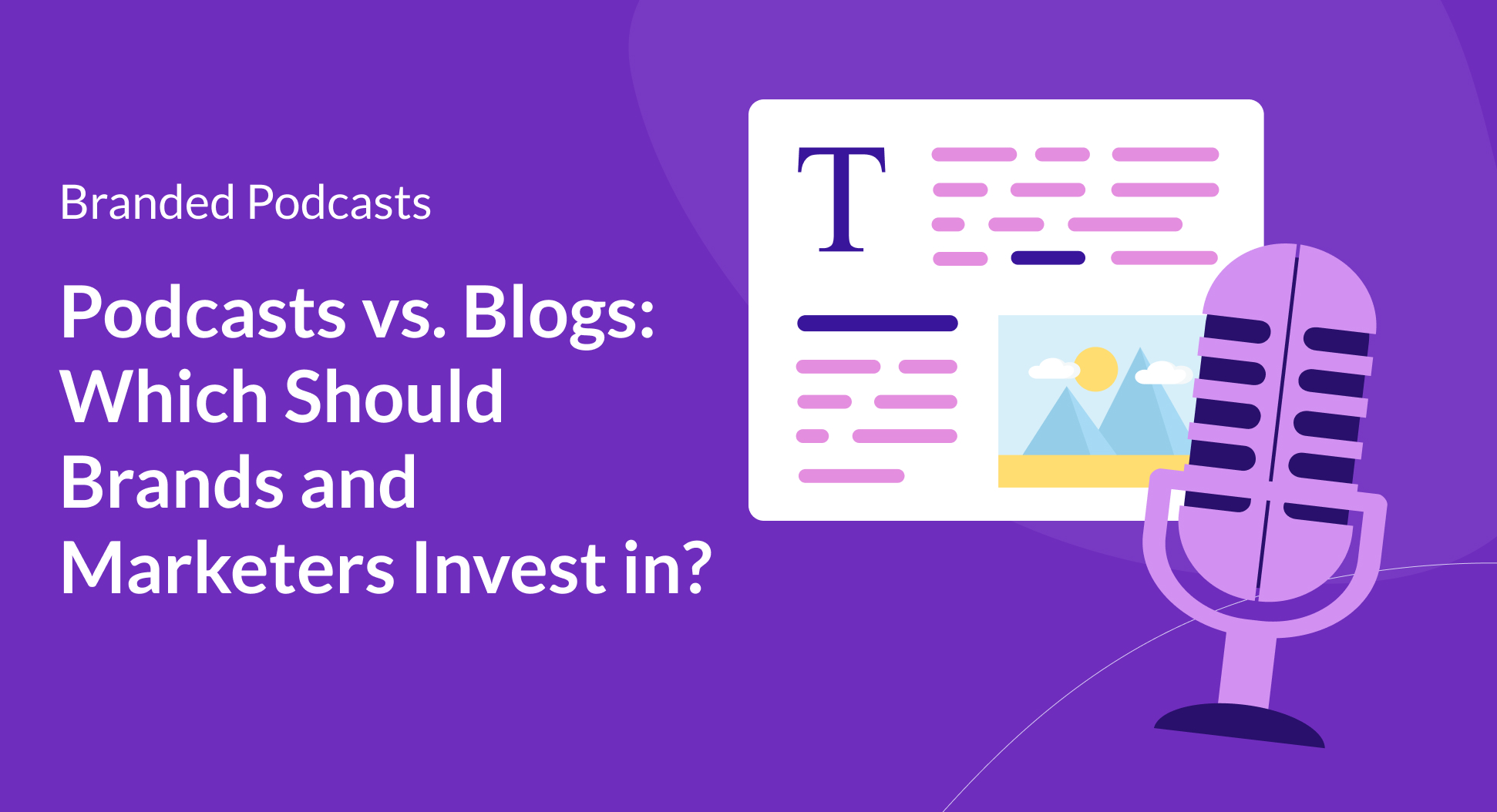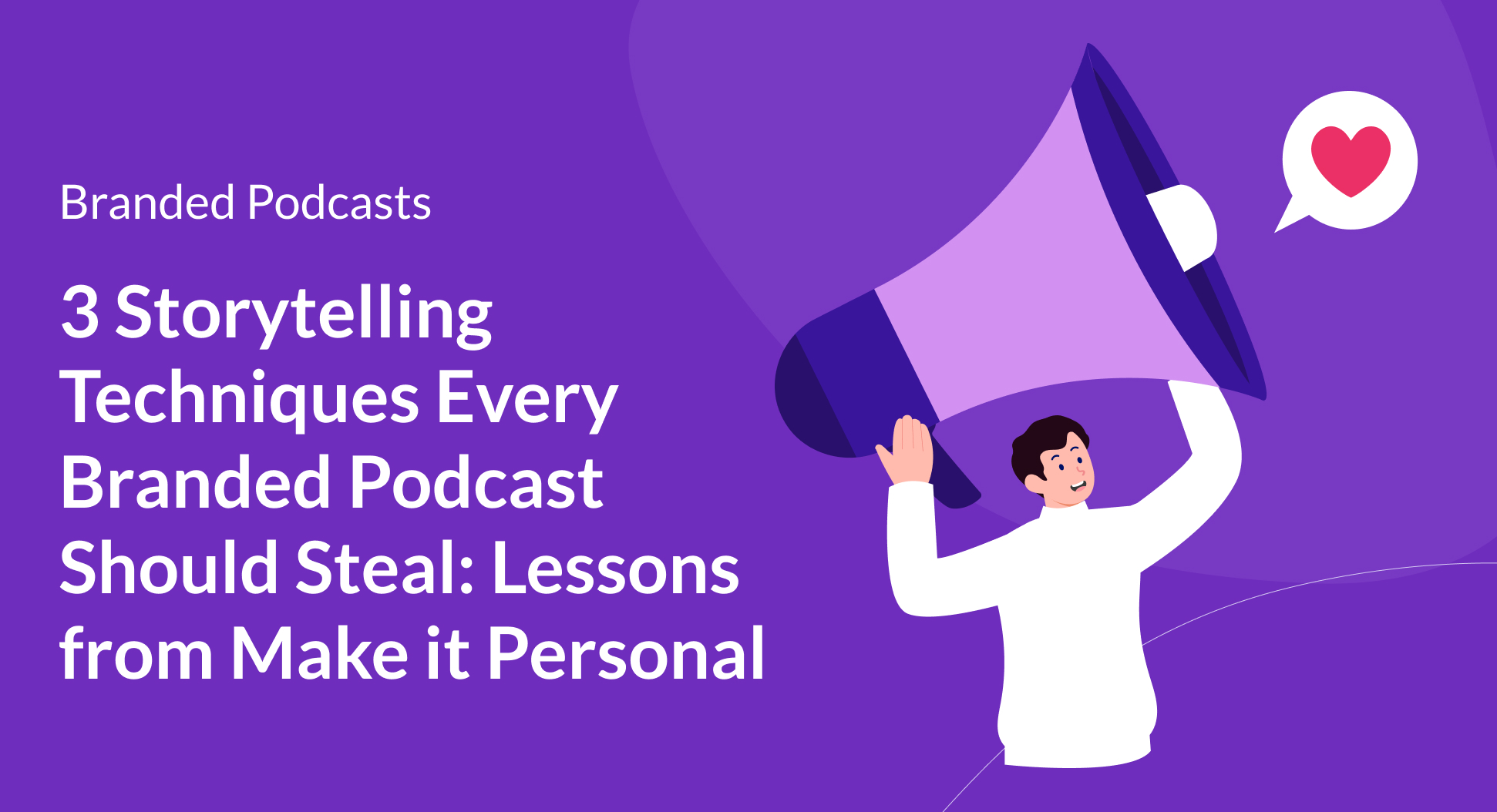Contents
Are you thinking of starting a podcast? Podcasts have become increasingly popular for audiences to hear interesting stories or to learn new skills. Although it seems easy to just grab a microphone and start recording a podcast, there are several areas that you need to focus on before you start, in order to…well, not fuck up your podcast!
1. Understand the Goal of Your Podcast
To begin, you need to understand what the objective of your podcast is. Consider what you want your show to be about and what the best way to tackle that is. Ultimately, what is it that you want to achieve by producing this podcast and how does your content translate to that?
It can be anything from creating a community, generating leads and awareness, elevating your brand, to product purchases. Knowing what you want your audiences to take away after listening will allow you to better tailor your content and action words towards them.
2. Create Your Ideal Listener Profile
On the other hand, you want to ensure you are targeting the right audience and listeners when it comes to promoting your podcast. Based on your objective, who do you want tuning in? And based on that audience, what are the demographics, psychographics, and behaviours associated with that target group?
Finding the answers to these questions helps you ensure your content is suitable for that audience. Podcast episodes need to continue to produce value for your audience for them to become active and consistent listeners. Understanding the attitudes, interests, and behaviours of your ideal listeners will help you develop techniques to continue drawing them in.
Additionally, understanding your listener profile will give you insight into your audience’s interests, values, and behaviours. This is key to shaping your podcast’s personality and brand. Some key questions around this would be:
- How should your podcast sound?
- How should you format your overall series?
- How long should the episodes be?
- What tone will your podcast have?
- What emotions will it convey?
3. Differentiate Your Show
With hundreds of podcasts often targeting similar audiences, it is important that your show delivers a unique value-add to your audience. To do so, compare your show to top podcasts in the same category. Based on this comparison, what can you find that is different? What makes your podcast stand out? What are audiences seeking, but not getting from today’s top charts? Answer the above questions to find your podcast’s unique value proposition.
Pro tip: Choose a niche within the subject matter of your podcast. For example, if you are interviewing entrepreneurs about their business, you can focus on a specific type of entrepreneur or geographical location so that you can narrow down your audience, creating content that is hyper-relevant to them.
4. Be Consistent and Keep Your Quality in Check!
In the last day, over 5000 podcasts have been added to Apple Podcasts alone! This means that there is a constant stream of new content in the realm of podcasts and you need to keep up to stay relevant and top of mind.
Three key things you should keep in mind are the following:
- Content Quality: Make sure that you are guiding your audience through a narrative. Build up the context, get to the meat of the story, and add signposts to give your audience a break, leaving them wanting more. Signposts are verbal statements used within your podcast that engages your audience and helps to bring them throughout the episode. This can be helpful to point out specific concepts that have been brought up so that listeners do not miss out on key details.
- Technical Quality: You need to have high-quality audio that compares to popular shows that people are listening to regularly. If your show is noticeably lower quality than other shows in your category, listeners may tune into their series instead.
- Regular Cadence: Pick a day and frequency for distributing your podcast and stick with it. You also need to ensure that you are consistently engaging with your audience and providing them with content, otherwise, people will forget about you.
5. Define a Marketing Strategy
Beyond uploading your podcast, you are most likely promoting and engaging with your audience on different mediums such as social media or your website. Once again, it is important that you look at your audience to understand their behaviours so your marketing content is tailored to them as well.
This may affect what you name your podcast, since you want to ensure it is distinctive, easy to spell, and unique in nature. Word of mouth is a great promotion tactic that is key for podcasting and it is dependent on factors such as the name.
Once the podcast is created, building a community around it helps your audience feel like they are a part of something. This entails keeping up with your social media and websites to post updates and additional information that tailors to the content they will be listening to. You can also ask your audience questions and get them involved in the process.
For search engine optimization purposes, your podcast should be mentioned frequently as a keyword on your website and within your blog content so that anyone who is interested in looking it up can find it easily.
In addition, it helps to have platform discoverability. You can rent RSS feeds of popular or related feeds, secure mentions from other podcast hosts, or sponsor other podcasts to get your name out there in the beginning.
The key here is to make sure your show is easy to discover, so whichever promotional channels you choose, make sure it’s visible wherever your potential listeners already live.
6. Be Sure To Measure Your Success
The success of your podcast can be tracked in various ways; it is not all about the downloads! As we mentioned previously, niche audiences are powerful and understanding who they are, their interests, and their behaviours will assist you in creating a successful series. But if you did want to focus on downloads, a key metric to look at is your unique listener count. This is the most accurate number you will get for your shows unique downloads and understand approximately the number of listeners that are tuning in to each episode.
You can also look into Chartable SmartLinks and analytics to develop that understanding further. If your podcast is available on Spotify and Apple (it should be!), both platforms provide unique analytics based on your show.
Overall, it is important that you choose a distribution platform that is accessible and helpful for both engagement and tracking. Then, just make adjustments and further tailor your podcast if you see that certain shows have higher listener retention or are achieving other success factors.
Podcasts are meant to inspire and inform.
Now that you know how to promote and tailor your content, you are in the best position to engage with your audience and ensure that you don’t fuck up your podcast.
Consistently analyze the material you are producing so that you can continue to create value for your listeners.
If you’re interested in producing your own podcast or have any other questions, let us know!
By Anika Peng in partnership with Fuckup Nights Toronto


.avif)



.png)

.png)




.png)
.png)
.png)
.png)